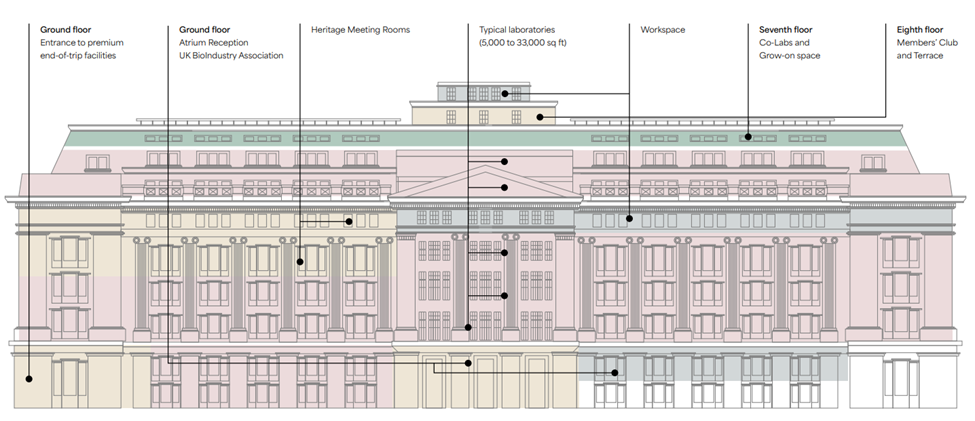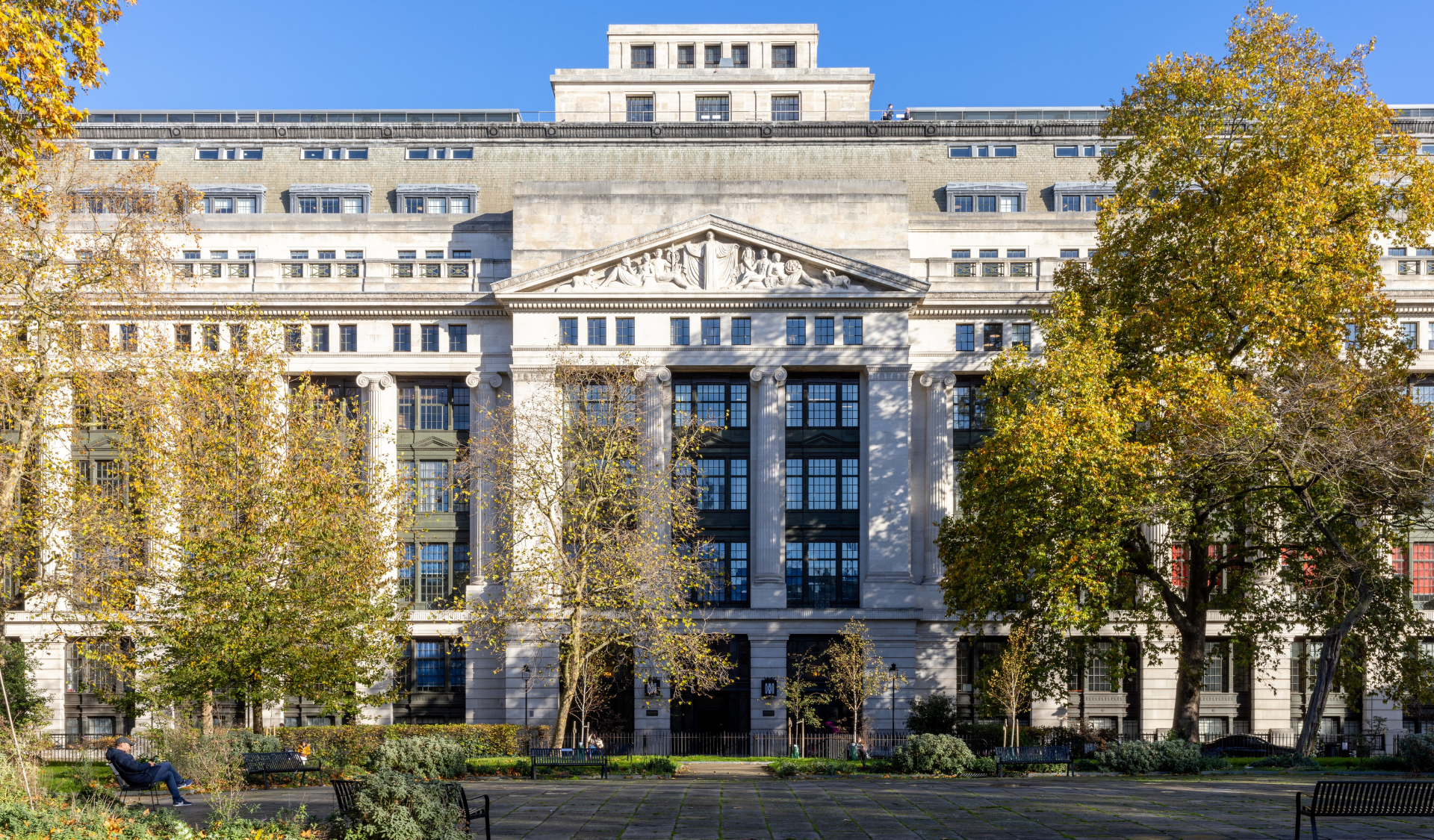London, Oxford, and Cambridge form the UK’s Golden Triangle. This is where academia, entrepreneurship, and capital collide with a rich history of innovation. While the Golden Triangle has established itself as one of the most distinguished global life sciences hubs, its growth potential can only be fully realized by increasing its local supply.
To address critical undersupply Oxford is bringing speed to market through its creative office-to-lab conversion project at Victoria House. This is Central London’s largest conversion projects set to deliver ~210,000 square feet of lab space alongside 100,000 square feet of supporting office & ancillary amenity accommodation to create a holistic life science ecosystem.
In order to gain insight on how Oxford is addressing the complexities of a conversion project of this scale we sat down with Abby Shapiro Senior Vice President, Europe to learn more.
Q: What makes the Golden Triangle, and London in particular, such a strong market?
Abby Shapiro: There are incredibly strong market fundamentals underlying the expected growth of the London life science market. You have the convergence of London's established research universities, institutes and hospitals and VC capital groups, major tech HQ’s and a deep talent pool across science and technology. Overall, we see a significant pent-up supply / demand imbalance, particularly in London where we have reached functional full occupancy with sub 1% vacancy in 2023.
Q: How did the team pinpoint this opportunity?
AS: Our operating partner, Pioneer Group identified this opportunity after years of searching for the perfect life science conversion asset in London. Victoria House ticked all the right boxes: well-connected, access to academia, financial funding opportunities, the right specs for conversion, and a ‘wow factor’ from being housed in a Grade II listed building.
This location in Bloomsbury specifically has a robust life sciences community with proximity to esteemed institutions like UCL, Great Ormond Street Hospital, Wellcome Trust, the Crick, Google, MSD, among others. Additionally, it’s within walking distance of prominent life science venture capital firms such as Syncona, Advent, Octopus Ventures, and SV Health. We were fortunate to have established a collaborative relationship with Pioneer Group to draw on the relative strengths of Oxford and Pioneer Group to unlock this opportunity.
Q: What is the historical significance of Victoria House and its larger ecosystem?
AS: The Golden Triangle has a storied history of innovation. It is the epicenter of research and discovery, home to the oldest universities in the English-speaking world and the birthplace of life-changing discoveries for many centuries. The area has a future focus with deep roots, much like Victoria House itself. We are taking a neo-classical office building constructed in the 1920s and giving it a new lease on life. Also, what you may find surprising is buildings from this era have the exact compatible specifications to what we look for in lab conversions.
Then you look to today. Victoria House is building on that historical momentum. We will have a range of incubator, fully fitted and CAT A lab space to accommodate a range of occupiers from start-ups through to established pharma. Going beyond the four walls of the labs, we’re introducing complimentary office, ancillary retail, and amenity space to help support a sustainable life sciences ecosystem.
The BioIndustry Association opened their new headquarters at Victoria House in Q3 2023 and Pioneer Group will be launching an incubator on ~11,000 square feet in the building upon delivery, both acting as cornerstone occupiers of this future ecosystem.

Q: What made Victoria House well suited for a conversion?
AS: The needs of our life sciences customers differ greatly from office. We start with that customer focus and work backwards. Victoria House was built around three cores and two atriums. This allowed vertical delivery of both passengers and goods, ventilation, drainage and power supply in line with the operational needs of future lab occupiers while protecting existing leasable areas.
Plant space on the roof and in the generous loading bay will facilitate the installation of critical MEP equipment (liquid nitrogen generator, occupiers’ plants, waste & storage) and the future proofing the asset from an ESG perspective (air source heat pumps). The exceptional common areas within the foyer, heritage rooms, member club and rooftop will offer representative spaces to all occupiers while facilitating cross-pollination within the Victoria House Ecosystem.
While these represent the gaps we assessed between office and lab, there are also striking similarities. The central similarity being – experience. We know from our investment, management, and development of real estate across all asset classes that our customers are looking for exceptional experiences. It is not something exclusive to office or retail.
We took that holistic human-centric approach to Victoria House with its heritage meeting rooms, communal collaborative spaces, terraces, and health and wellness facilities to improve the overall customer experience.
Q: What is the key benefit of a conversion versus a new build?
AS: Speed to market. The project will deliver meaningful new supply of best-in-class lab space to the London market amid a critical shortage, which has reached functional full occupancy.
Thus, a great way to close the gap between business growth and infrastructure is through conversion projects like Victoria House. Assuming the right specifications are present in an existing building, conversions bring product to the market at a pace new builds can’t match.
For the last 15 years Oxford has invested over £8 billion to deliver homes, workplaces, logistics infrastructure, and labs to the UK. To learn more about Victoria House and Pioneer Group.
